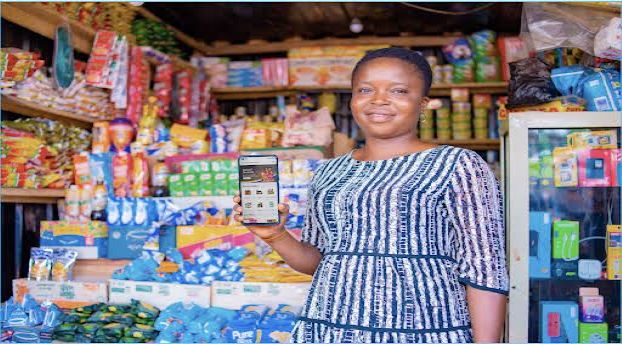Telecom
Mobile Apps is Vehicle for Cognizant Computing by 2017 – report

Mobile apps will be downloaded more than 268 billion times, generating revenue of more than $77 billion and making apps one of the most popular computing tools for users across the globe By 2017, according to Gartner, Inc.
As a result, Gartner predicts that mobile users will provide personalized data streams to more than 100 apps and services every day.
“Mobile apps have become the official channel to drive content and services to consumers. From entertainment content to productivity services, from quantified-self to home automation, there is an app for practically anything a connected consumer may want to achieve,” said Brian Blau, research director at Gartner.
“This connection to consumer services means users are constantly funneling data through mobile apps. As users continue to adopt and interact with apps, it is their data — what they say, what they do, where they go — that is transforming the app interaction paradigm.”
Currently, apps often provide an opportunity for brands to reach and engage with customers in a direct way, and therefore data coming from the user is often treated as a resource.
This is especially true of free apps, which in 2013 account for 92 percent of app downloads. App users are providing troves of data and often accept advertising or data connectivity in exchange for access to the app.
Gartner said that brands and businesses are already using mobile apps as a primary component of their user engagement strategies, and as the use of mobile devices, including wearable devices, expands into other areas of consumer and business activities, mobile apps will become even more significant.
“In the next three to four years, apps will no longer be simply confined to smartphones and tablets, but will impact a wider set of devices, from home appliances to cars and wearable devices,” said Mr. Blau.
“By 2017, Gartner predicts that wearable devices will drive 50 percent of total app interactions.”
Wearable devices will use mobile apps as their conduit for data exchange and user interface, because many of them will have few or no user interface capabilities. Offloading that responsibility to the mobile device means the wearable devices will depend on apps for all types of user input or output, configuration, content creation and consumption, and in some cases, basic connectivity.
“While wearable devices will not fully rely on, or be a slave to, mobile devices, it is a way for manufacturers to keep these devices small and efficient, therefore significantly reducing device costs in favor of using apps, which are more easily maintained and updated,” said Mr. Blau.
“Considering their underlying service, most wearable devices need some type of user interface. Taking the example of a fitness-tracking device, ultimately its onboard data will need to be uploaded into the cloud, processed, and then analyzed in reporting back to the user. Apps are an obvious and convenient platform to enable great products and services to be developed.”
Mobile apps are often a vehicle for cognizant computing, in which the data gathered through the use of the apps and the analytics around it are becoming more important in both volume and value. In fact, it can be so sophisticated that through their solution providers, consumer brands know a lot about any individual consumer, such as the consumer’s demographic data, location, preferences, habits, and even his or her social circle, in some cases.
As a result, Gartner predicts that by 2015, cognizant computing will be a key enabler in smart home solutions.
“Cognizant computing takes intelligent actions on behalf of users based on their historical data, preferences and rules,” said Sandy Shen, research director at Gartner.
“It can predict user needs and complete tasks without users initiating the action or interfering with the service. It can take the very simplistic format of completing a recurring event such as to turn on the water heater at a preset time, or the more sophisticated format of calling the rescue services and connecting with the doctor when an emergency occurs.
Cognizant computing can play a meaningful role at home because home settings are stable with relatively fixed equipment, and the user behavior there is routine and predictable. Tasks tend to be linear, in that each stays in its own boundaries with little interactions among different disciplines. For example, the entertainment services are unlikely to need to interact with the healthcare or home management services. Also, the amount of equipment or service data to call upon is relatively small compared with an outdoor environment, where the surrounding conditions and user intentions are more diverse.
Large service providers such as Google, Amazon, Facebook and Apple are likely to have a head start in this market due to the relationship they already have with consumers, which provides them with a large repository of user data that they can analyze and predict — a key asset in cognizant computing.
In addition, consumers also trust these brands to manage their personal data — another key aspect in cognizant computing, whereas newcomers will have to build these relationships from scratch.
Smart home solutions will likely span across various brands and platforms in order to become “intelligent” and deliver good user experience. Those that are restricted to a single brand are likely to lose the competitive edge.
Telecom
African Women Hit Hardest as Mobile Internet Gender Gap Persists

African women remain among the most digitally excluded globally, with smartphone affordability and digital literacy among the key barriers. New data from the 2025 GSMA Mobile Gender Gap Report, launched recently, reveals a persistent global gender gap in mobile internet use across low- and middle-income countries (LMICs).

It further notes that literacy, digital skills, safety, and affordability of data also remain critical barriers. The report highlights that 885 million women across these regions still do not use mobile internet, with nearly 60% of them living in Sub-Saharan Africa and South Asia.
While mobile internet is the primary way women in LMICs access the internet, offering critical lifelines to health, education, and financial services, the pace of female adoption has stalled, leaving 235 million fewer women than men connected.
Claire Sibthorpe, head of digital inclusion at GSMA, highlighted that the gender gap had narrowed significantly between 2017 and 2020, but progress flatlined in recent years.
Although 2023 brought a slight improvement, restoring the gap to 15%, 2024 saw minimal change, with the gap settling at 14%.
The disparity is most severe in Sub-Saharan Africa, where women are 29% less likely than men to use mobile internet.
“It’s disheartening that progress in reducing the mobile internet gender gap has stalled. The digital divide is driven by deep-rooted socio-economic and cultural factors that disproportionately impact women,” said Sibthorpe.
GSMA projects that closing the gender gap by 2030 could add $1.3 trillion to GDP across LMICs and deliver $230 billion in revenue to the mobile industry.
The report, funded by the UK FCDO, Sida, and the Gates Foundation, stresses the urgent need for targeted investment and policy action to bridge the digital divide and ensure that no woman is left offline.
“The mobile internet gender gap is not going to close on its own. It is driven by deep-rooted social, economic, and cultural factors that disproportionately impact women,” said Sibthorpe.
Telecom
₦800 Billion Infrastructure Plan Set to Boost MTN’s Network Quality Nationwide

In a recent interview, MTN Nigeria reaffirmed that its ongoing infrastructure investment is a strategic step to improve network quality, speed, and nationwide coverage.

Speaking on Beyond the Headlines with Nifemi Oguntoye, Ugonwa Nwoye, Chief Customer and Experience Officer at MTN Nigeria, explained that although public concern is valid, the company undertook several internal cost-efficiency measures before making structural adjustments.
She emphasised that improved investment is critical to fast-tracking improvements across MTN’s network.
Nwoye explained that MTN undertook extensive internal reforms before embarking on structural changes needed to support this scale of investment.
The company completed its phased roll-out of the increase between February and March, ensuring that every existing data plan was below the 50% increase, and most remained below 25%.
She also noted that customers were proactively informed about all changes, particularly when certain legacy plans were retired and replaced with new ones. “We gave customers six to eight weeks’ notice,” she explained.
“This is why it has taken us some time to complete this process, where we let customers know that at a certain date, this particular tariff is not going to exist.”
Nwoye stressed that MTN had exhausted other internal measures before turning to broader structural updates. Now, with the new pricing structure in place, the company is accelerating its investment in infrastructure, spending over ₦200 billion in the first quarter of 2025 alone, a 159% increase from the same period last year. A total capital expenditure of ₦800 billion is planned for the year.
She noted that this investment is a direct outcome of long-term operational restructuring aimed at improving service quality.
She added, “We are investing over ₦800 billion this year alone in our infrastructure. This will translate into better customer experience, reduced congestion, faster internet speeds, and wider network reach.”
This investment will support the upgrade of over 1,000 cell sites and the expansion of more than 2,000 transmission links nationwide.
Nwoye stressed that these upgrades are designed to deliver faster data speeds, fewer dropped calls, and broader network reach, especially in underserved areas.
She acknowledged the public’s expectations for immediate service improvements but emphasised that large-scale infrastructure takes time to deploy.
Nonetheless, MTN expects customers to begin experiencing visible improvements in network performance by the second half of the year.
In a sector where service quality and customer satisfaction are closely watched, MTN maintains that its ongoing investments are not merely capital commitments but vital enablers of improved digital experiences across Nigeria.
Telecom
Remita’s Bold Leap: Nigeria’s Fintech Giant Expands Across Africa

Remita, the pioneering Nigerian payment technology platform developed by SystemSpecs, is charting a bold new course with its planned expansion into markets across Africa.

What began as a payroll feature in an HR application has now become a robust ecosystem processing over ₦60 trillion annually—one that stands on the verge of reshaping the continent’s fintech landscape, Mr. Deremi Atanda, Managing Director/CEO of Remita Payment Services Limited, says in an exclusive interview that will grace the cover of eGovernance Nigeria Magazine.
The forthcoming edition of eGovernance Nigeria Magazine, a publication of the Technology Times media brand owned and operated by Digital Transformation Media Limited (DTML), will spotlight this extraordinary journey, and present Remita’s evolution as an inspiring tale that informs, educates, and entertains readers about indigenous innovation making global strides.
“We’ve become an ecosystem of rails, products, and services—robust,” Atanda, Managing Director/CEO of Remita explains during the exclusive interview with eGovernance Nigeria Magazine.
“Layering all of that with the many different customers we’ve had, typically every year we process in excess of maybe ₦60 trillion in transactions in Nigerian Naira. And this can only grow, especially as we begin to think of a vibrant Pan-African expansion. We’re at the fringe of that.”
In a compelling narrative that mixes grit, vision, and innovation, Atanda recounts Remita’s early days. “What many people know today as Remita actually started out as a feature within our HR/payroll application.
“You process salaries, and you just want to pay—so just remit salaries. And by the way, that’s where the name ‘Remita’ came from: Remittance. We just took out one ‘T’ and left it at ‘A.’”
Even the company’s logo carries symbolism of that transformation. “I don’t know if you’ve seen our logo—it has three dots, in ascending size. There are many stories in that logo. It started as a feature, and then we brought it out as a product,” Atanda explains.
Yet the road was not without its bumps. “The first time we brought it out as a product was to bid for the National Pension Commission. This was in 2004, with the PenCom Act.
“We packaged this into a product in less than two weeks to take care of end-to-end pensions as it was conceived. Trust me, that vision is still viable today. But we lost that bid.”
Undeterred, SystemSpecs pivoted. “We went back and said, ‘What do we do with this asset?’ If it’s not going to work for pensions, let it become a product. And that’s how we renamed pensions.com.ng as Remita, and it became a product.”
As demand grew, Remita expanded beyond payroll. “Some people want to do their own payroll and just make payments, so let them have a site to go to. Later, it evolved into not just payroll payments. People wanted to do other types of payments. If you want to do non-salary payments, you go to Remita,” he says.
Today, Remita has fully matured into a standalone company. “So those three things—feature, product, company. That’s been the evolution.” With a Tier 1 licence from the Central Bank of Nigeria, Remita is now a fintech powerhouse. “We do switching, we do payment service provisioning, we do super agency, we do terminals—everything you can think about. We provide some basic services within the payment space, including payment service advisory.”
A lesser-known chapter of Remita’s growth includes building Nigeria’s first account-to-accountswitch. “Before TSA, we had built a rail—Nigeria’s first account-to-account switch, worked with all the banks. Not many people know that story. Account-to-account. The front of it, the application, and the rail—first of its kind.”
On the pivotal Treasury Single Account (TSA) deal with the Federal Government of Nigeria, Atanda reveals, “TSA was a happenstance. The government was looking to solve a problem, and we were looking to get regulated. It’s that term people use—when they say ‘luck,’ it’s just preparation meeting opportunity.”
Reflecting on the journey, he adds, “These have been some of those moments where you feel validated, where the visionary leadership that set the business up feels the vision is being realized.”
Today, Remita employs over 300 Nigerians and looks beyond its home shores. “The vision is huge, and we’re committed to that. So, we see exponential growth, and we’re positioning for that.”
Mr. Shina Badaru, Chairman of DTML, says Remita’s story is an inspirational example of local innovation with global relevance. “Remita’s success highlights the critical role of indigenous technology solutions in redefining Africa’s digital economy,” he says.
“As the cover story of the next issue of eGovernance Nigeria Magazine, we aim to showcase how homegrown innovation is not only solving problems locally but is also poised to transform markets across the African continent.”
According to Badaru, “Remita’s inspiring journey connects seamlessly with our article of faith to continue to showcase Nigeria’s growing contributions to the global technology industry.”
eGovernance Nigeria Magazine is a flagship DTML platform with operations across print, digital, TV, events, and e-commerce channels.
“This feature not only celebrates Remita’s evolution,” Badaru adds, “but also signals a pivotal shift in the narrative of Nigerian and African technology—from survival to scale, from local impact to continental transformation.”
As Remita sets its sights on Africa, it is poised to bring financial inclusion, digital infrastructure, and innovative fintech solutions to new and underserved markets. With a strong foundation and visionary leadership, the company is ready to deliver the next phase of its remarkable journey.

 General News2 days ago
General News2 days agoNITDA Advocates Strategic Partnership in Research to Unlock Nigeria’s Digital Potential

 News3 days ago
News3 days agoStakeholders Seek Strengthening of Digital Infrastructure @ IoT West Africa

 Telecom3 days ago
Telecom3 days agoAirtel Introduces Full Shopping Experience Within My Airtel App

 General News3 days ago
General News3 days agoLagos Slush’D 2025 To Promote Creativity among Start-ups

 General News3 days ago
General News3 days agoJumia Expands Delivery Service to Nigeria

 E-Business3 days ago
E-Business3 days agoQ1 2025 .ng Domain Name Statistics Reflect Nigeria’s Advancing Digital Landscape

 Telecom2 days ago
Telecom2 days agoGSMA Urges Governments to Prioritise Affordable Spectrum Costs to Support Global Digital Growth

 Telecom2 days ago
Telecom2 days agoTelcos Worry over Possible 5 Percent Tax Return


























